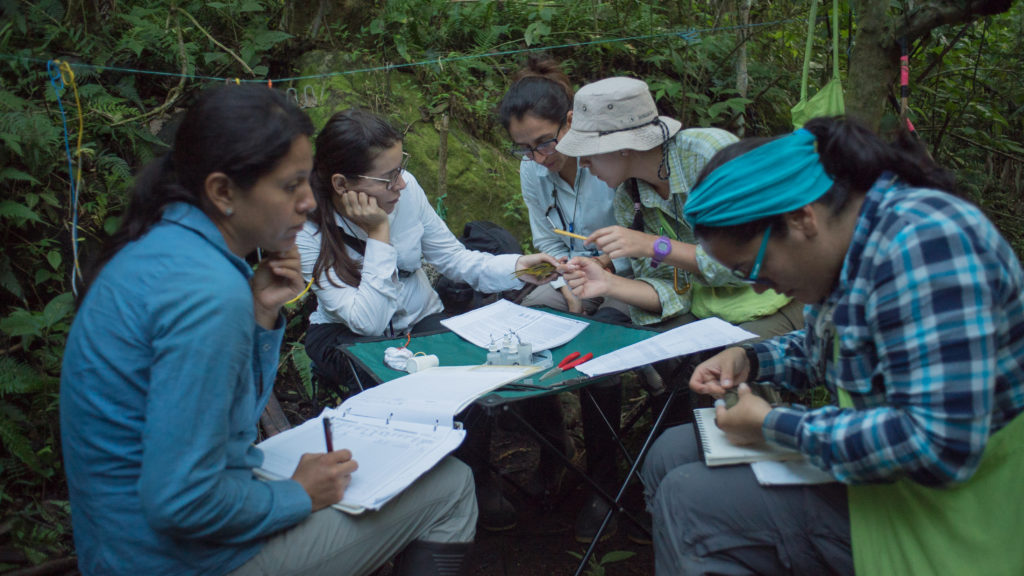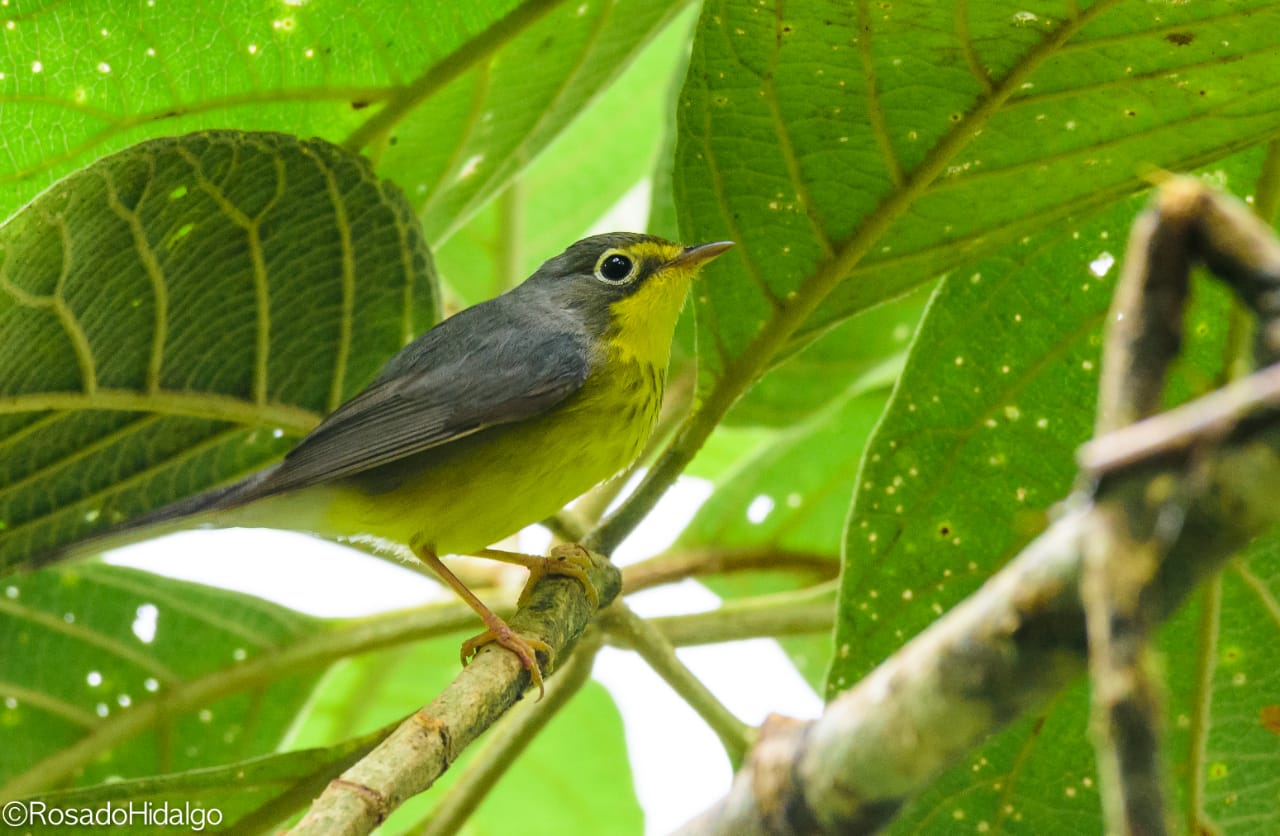By Ana M. González
Linked paper: Contrasting the suitability of shade coffee agriculture and native forest as overwinter habitat for Canada Warbler (Cardellina canadensis) in the Colombian Andes by A.M. González, S. Wilson, N.J. Bayly, and K.A. Hobson, The Condor: Ornithological Applications.
The Andean mountains of Colombia, my homeland, are home to the world’s highest diversity of birds and are a major coffee-producing region. Ideal conditions for coffee production in Colombia are found in mountainous areas between 1200 and 1800 meters in elevation, which overlap with the thin elevation belt holding the highest diversity and abundance of migratory songbirds in the country. Contrary to popular belief in North America, the landscape in the Andean mountains of northern South America is highly fragmented as a result of the expansion of cattle pastures and agriculture, including coffee plantations. Recent studies provide evidence that such habitat loss on the wintering grounds is the primary cause of declines for several migratory bird species that use tropical montane forest during the winter.
Due to the extensive loss of native forests, shade-grown coffee plantations are one of the few remaining habitats with forest-like vegetation in many mid- to high-elevation mountain ranges in Latin America. Therefore, conservation efforts for overwintering migratory species have focused on these agroecosystems to address the widespread loss of natural habitats. Studies have revealed a high diversity and abundance of Neotropical migrants in shade-grown coffee plantations and have shown individuals using this habitat typically survive the winter and return the following year. However, important questions remain, such as whether shade-grown coffee is a suitable habitat relative to the local native forest from which these plantations were carved. Every winter for five years (2013- 2017), we went to the Andean mountains to answer that question, using a declining migratory bird, the Canada Warbler, as a model.
Canada Warblers are listed under Canada’s Species-at-Risk Act, and Breeding Bird Survey data from North America show that over 60% of the breeding population has been lost in the last 50 years. With over 50% of its winter distribution range within the Andean mountains of Colombia, this species has become a model South American Neotropical migrant. It overlaps in both life history and wintering distribution with numerous other migratory species that use the same migratory routes and wintering areas.

Finding Canada Warblers, suitable shade-coffee plantations, and montane forest was one of the main challenges of our research given that only 10% of the original vegetation cover remains in the northern Andes and more than 60% of shade coffee has recently been converted to sun coffee. After a month exploring the three Andean cordilleras in Colombia, we found three study sites in the East Andes. Within each of these sites, we measured three indices that reflect the quality of each habitat: the proportion of males versus females (dominant males tend to occupy high-quality habitats), changes in body condition over the winter, and annual survival. During the winter of 2015, a strong El Niño year induced drier-than-average conditions in the study region. Since drought is linked to a decrease in food availability and habitat quality for Neotropical migrants, we also assessed the effect of El Niño events on survival.
We did not find major differences in the number of individuals captured in forest versus coffee, although males were more likely to be captured in forest than in coffee during drier years. Whether birds overwintered in forest or coffee also did not result in clear differences in body condition change during the winter or in apparent survival between years, but condition and apparent annual survival decreased in both habitats during the El Niño year.
Our findings suggest that shade-grown coffee plantations can be suitable winter habitats for Canada Warbler. However, it should be noted that shade-grown coffee plantations in our study sites are characterized by optimum conditions in terms of tree diversity, height, and canopy cover, which increase habitat suitability for Canada Warbler and other Neotropical migrants. Those conditions are not representative of other farms with shorter canopies, lower canopy cover, and poor floristic attributes that are likely less suitable and are widespread across the Andes.
Identifying and implementing conservation actions for migratory species of conservation concern thousands of kilometres away from North America is a critical challenge for conservation biologists. However, we can be part of the solution for winter habitat loss for Neotropical migrants by making informed ethical coffee choices and drinking certified shade-grown coffee such as those carrying the Smithsonian Bird Friendly seal.
